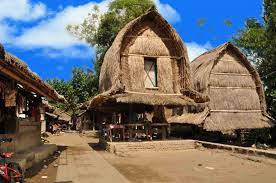30 Fascinating and Unknown Facts About Earth
The Earth's magnetic field flips every 200,000 to 700,000 years. While the exact cause is unknown, it's believed to be related to the movement of molten iron in the Earth's outer core.
The Earth has a "heartbeat" caused by changes in the atmosphere and oceans. This heartbeat is so subtle that we can't feel it, but it can be detected using advanced instruments.
The Earth's inner core is about as hot as the surface of the sun. This heat is generated by the radioactive decay of elements in the Earth's core.
There is a hidden continent beneath the Pacific Ocean called Zealandia. This continent is mostly submerged, but it is still larger than Australia.
Earth is not a perfect sphere, it is actually an "oblate spheroid." This means that it bulges slightly at the equator and is flattened at the poles.
The Earth's crust is constantly being recycled. This process is called plate tectonics, and it is responsible for the formation of mountains, volcanoes, and earthquakes.
There is more water in the Earth's mantle than in all the oceans combined. This water is trapped in the crystal structure of the minerals that make up the mantle.
The Earth's atmosphere is constantly being bombarded by cosmic rays. These rays are high-energy particles that come from outside our solar system.
The Earth's magnetic field protects us from the harmful effects of cosmic rays. Without this magnetic field, we would be exposed to much higher levels of radiation.
The Earth's rotation is slowly slowing down. This is due to the tidal interaction between the Earth and the Moon.
The Earth is a relatively young planet. It is only about 4.5 billion years old.
The Earth is the only planet in our solar system that is known to harbor life. This is likely due to its unique combination of liquid water, a protective atmosphere, and a stable climate.
The Earth is home to an estimated 8.7 million different species of plants and animals. However, many of these species are still unknown to science.
The Earth is constantly changing. From the movement of continents to the eruption of volcanoes, the Earth is a dynamic and ever-changing planet.
The Earth is a member of a large spiral galaxy called the Milky Way. This galaxy contains hundreds of billions of stars.
The Earth is located in the habitable zone of our solar system. This is the region where liquid water can exist on the surface of a planet.
The Earth's climate is changing due to human activities. This climate change is having a significant impact on the planet and its inhabitants.
The Earth is a finite resource. We need to be careful about how we use this resource so that there is enough for future generations.
The Earth is a beautiful and amazing planet. We are incredibly lucky to live here.
The Earth is a part of a vast and mysterious universe. We are just beginning to understand our place in this universe.
The Earth is a home for billions of people. We all share this planet and we need to work together to protect it.
The Earth is a source of inspiration for artists, writers, and scientists. It has fueled our creativity and helped us to understand our place in the universe.
The Earth is a fragile planet. We need to take care of it if we want to ensure that it can support life for future generations.
The Earth is a unique and precious planet. We should cherish it and protect it for all that it is.
The Earth is a reminder that we are all connected. We are all part of this planet and we all share responsibility for its future.
The Earth is a call to action. We need to take action to protect our planet and ensure a sustainable future for all.
The Earth is a symbol of hope. It is a reminder that even in the face of challenges, there is always hope for a better future.
The Earth is a gift. We should be grateful for this beautiful planet and all that it has to offer.
The Earth is a reminder that we are all passengers on the same spaceship. We need to work together to ensure that this spaceship continues to travel through the cosmos for generations to come.
The Earth is a mystery. We still have much to learn about this amazing planet.



.jpg)








